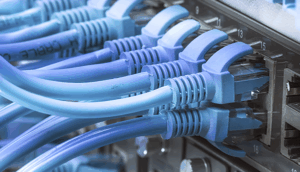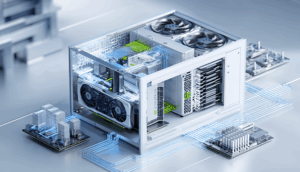The convergence of industrial technology and medical advancements is driving a revolution in healthcare. At the heart of this transformation lies the crucial role of specialized cables designed for both industrial data communication and medical applications. These cables are not merely conduits for electrical signals; they are the lifelines of smart healthcare systems, enabling reliable data transmission, powering critical equipment, and ensuring patient safety. The unique demands of the medical environment, coupled with the increasing complexity of industrial automation, necessitate cables that can withstand rigorous use, maintain signal integrity, and adhere to stringent regulatory standards. This article delves into the specific ways these cables support smart healthcare, exploring their technical specifications, applications, and the challenges in their design and implementation.

One of the primary applications of industrial and medical cables in smart healthcare is in diagnostic imaging. Medical imaging devices, such as MRI scanners, CT scanners, and X-ray machines, rely on high-speed data communication to generate detailed images of the human body. Cables used in these devices must be capable of transmitting massive amounts of data quickly and accurately, minimizing scan times and maximizing image resolution. Furthermore, these cables must be shielded to prevent electromagnetic interference, which can degrade image quality and lead to inaccurate diagnoses. Specialized cables are also used to power and control robotic surgical systems, allowing surgeons to perform minimally invasive procedures with greater precision and control. These cables must be flexible, durable, and capable of withstanding the harsh conditions of the operating room, including exposure to sterilization chemicals and high temperatures.
Beyond diagnostic imaging and robotic surgery, industrial data communication cables play a vital role in patient monitoring systems. These systems continuously monitor patients’ vital signs, such as heart rate, blood pressure, and oxygen saturation, providing real-time data to healthcare providers. Reliable data transmission is critical in these applications, as any interruption or corruption of the signal can have serious consequences for patient safety. Cables used in patient monitoring systems must be resistant to interference from other electronic devices and capable of transmitting data over long distances without signal degradation. They also need to meet strict biocompatibility standards to ensure they do not cause any adverse reactions when in contact with patients.

The design and manufacturing of industrial and medical cables present unique challenges. Medical cables, in particular, must meet stringent regulatory requirements, such as those set by the FDA in the United States and the European Union’s Medical Device Regulation (MDR). These regulations specify the materials that can be used, the testing procedures that must be followed, and the documentation that must be maintained. Manufacturers must also ensure that their cables are biocompatible and do not contain any harmful substances that could leach into the patient’s body. Industrial cables, while not subject to the same level of scrutiny as medical cables, must still be durable, reliable, and capable of withstanding the harsh conditions of industrial environments, such as exposure to chemicals, extreme temperatures, and mechanical stress.
In conclusion, industrial and medical cables are indispensable components of smart healthcare systems. They enable reliable data transmission, power critical equipment, and ensure patient safety in a wide range of applications, from diagnostic imaging to robotic surgery to patient monitoring. As healthcare technology continues to advance, the demand for high-performance cables will only increase. Manufacturers must continue to innovate and develop cables that meet the ever-evolving needs of the healthcare industry, ensuring that patients receive the best possible care. The future of smart healthcare is inextricably linked to the advancement of these crucial infrastructure components, paving the way for more efficient, accurate, and patient-centric medical services.
